10 Reasons to Hike in the Gunnison Valley
Discover 10 reasons to hike in the Gunnison Valley. This secluded corner of the state is 85% public land, providing ample trails to explore. Gunnison has exceptional high desert trails. Explore rugged trails covered with sagebrush, or wander through spiny rock formations. Crested Butte offers flowy and rocky high alpine hiking with wildflowers. Topping out on Crested Butte trails earns views of Colorado’s iconic red rocks, and wildlife such as elk and marmots. Keep reading to learn more about why hiking is so popular in the Gunnison Valley.

1. Over 1,000 miles of trails to explore
The Gunnison Valley has over 1,200 miles of trails to hike and explore. You could visit multiple times and still have new trails to hike! Learn more and view a trail map in this complete guide to hiking in the Gunnison Valley.
2. Crested Butte is the official Wildflower Capital of Colorado
Every summer, Crested Butte’s landscape comes alive with the bright colors and shapes of wildflowers. Columbines, aspen sunflowers, paintbrush, lupine, fireweed and larkspur are just a few you’ll find while hiking in Crested Butte. Wildflower season begins in June. The flowers usually peak in July and are gone around the end of August.
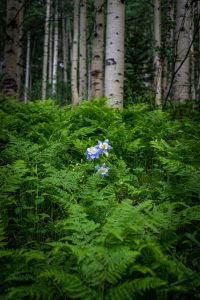
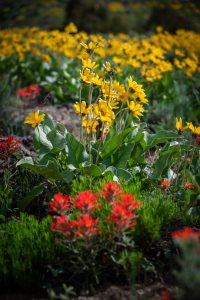
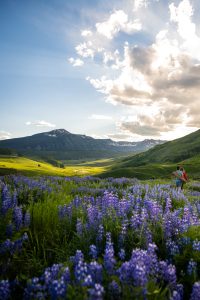
3. Diverse terrain
Explore the rolling high desert hills of Hartman Rocks in Gunnison or get above treeline in Crested Butte. Gunnison and Crested Butte are just 30 miles apart, making it easy to experience these different environments on one trip.
Gunnison’s elevation is 7,703 feet. Hartman Rocks is a high desert landscape characterized by dramatic rock formations, rolling terrain and expansive views. The rock at Hartman’s is mostly granite and gneiss.
Crested Butte’s elevation ranges from 8,885 feet to over 12,000 feet in surrounding peaks. Lower elevation hikes wind through aspens, fir trees and wildflower-filled meadows. Hikes above treeline offer expansive views of the Gunnison Valley and the surrounding mountains. Looking for unique wildflowers? Sky pilots and columbines are two wildflowers that grow above treeline.
4. Breathtaking views
One of the best reasons to hike in the Gunnison Valley is the views. So much of the Gunnison Valley is pristine and protected land. You can find incredible views from practically any hike, whether close to town or from a summit. Look down on the valley floor at meadows, forests and snaking rivers. See the jagged peaks that surround the valley touch the clouds.
Woods Walk is an easy wildflower hike close to town. This mellow hike has views of Crested Butte Mountain, Gothic Mountain and Peanut Lake. The peak hike for Crested Butte Mountain looks down on the town of Crested Butte. Take in the 360-degree views of the Elk Mountains, the East River Valley, Gunnison and the Ruby Range as well. You might even get a glimpse of the La Sal Mountains in Utah on a really clear day. Other hikes with stunning views include Mt. Emmons, Mill-Castle and Brush Creek.
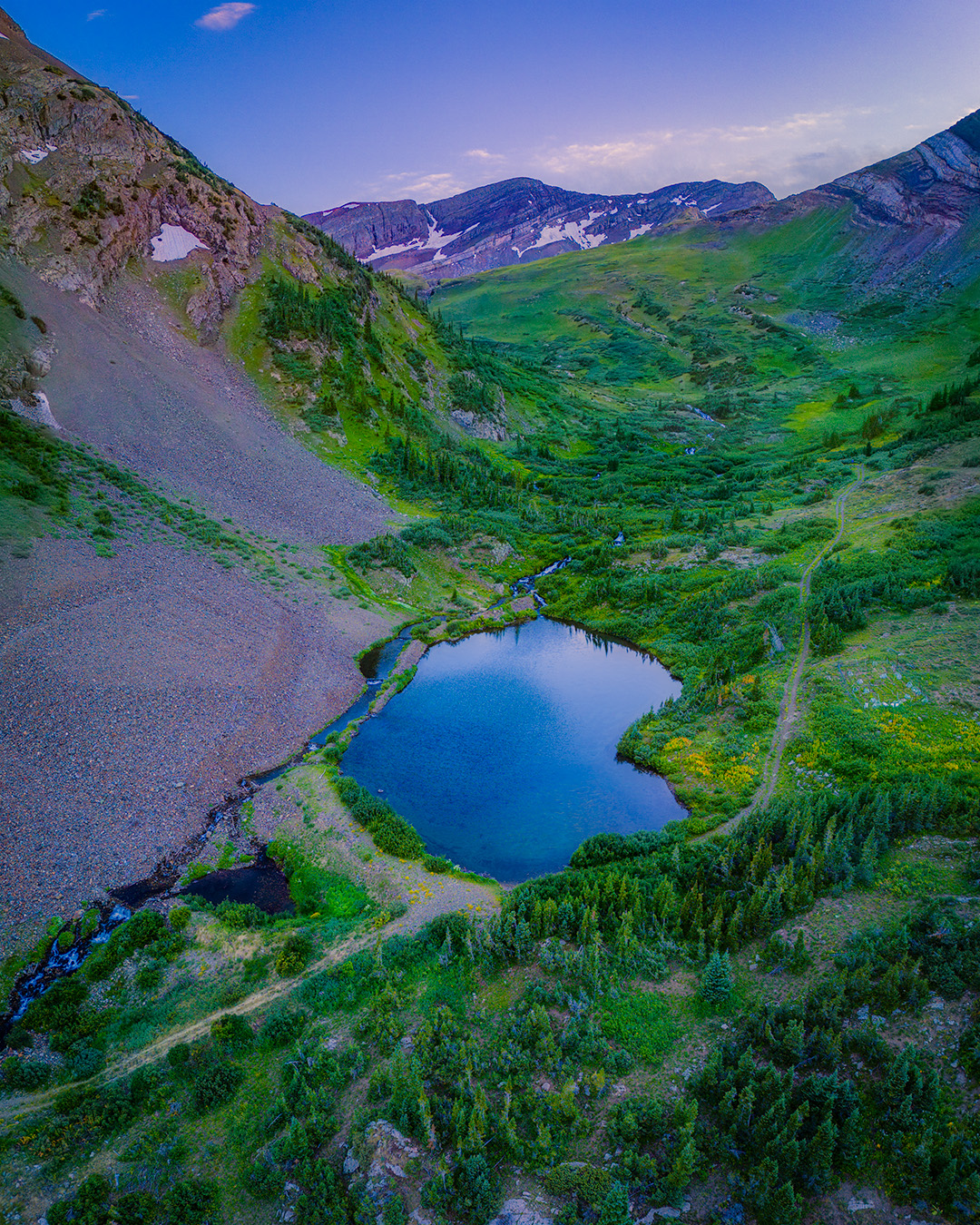
5. Lake and waterfall hikes
Alpine lakes dot the Gunnison Valley’s backcountry. Lake hikes provide not only stunning scenery, but also an opportunity for a refreshing dip on a summer hike. Looking for waterfalls? Hikes with waterfalls include Judd Falls, North Pole Basin Falls and Oh-Be-Joyful Falls.
6. Hikes for all abilities
The Gunnison Valley has a variety of easy, moderate and challenging hikes. Take your kids on a mellow hike the whole family can enjoy. Or plan a challenging summit with buddies. Get ideas of trails to hike based on difficultly level below.
Easy hikes in the Gunnison Valley
– Woods Walk, 2.9 miles out-and-back
– Beaver Pond Trail, 1.1 miles out-and-back
– Bambi’s and Sawtooth Loop, 3.1 mile loop
Moderate hikes in the Gunnison Valley
– Green Lake Trail, 8.5 miles out-and-back
– Swampy Pass Loop, 3.8 mile loop
– Curecanti Creek, 3.7 miles out-and-back
– Walrod – Caves Loop, 5 mile loop
Challenging hikes in the Gunnison Valley
– Mill-Castle Trail, 9.2 miles out-and-back
– Copper Lake, 11.8 miles out-and-back
– Scarp Ridge Middle Loop, 4.6 mile loop
– Oh Be Joyful to Blue Lake, 13 miles out-and-back
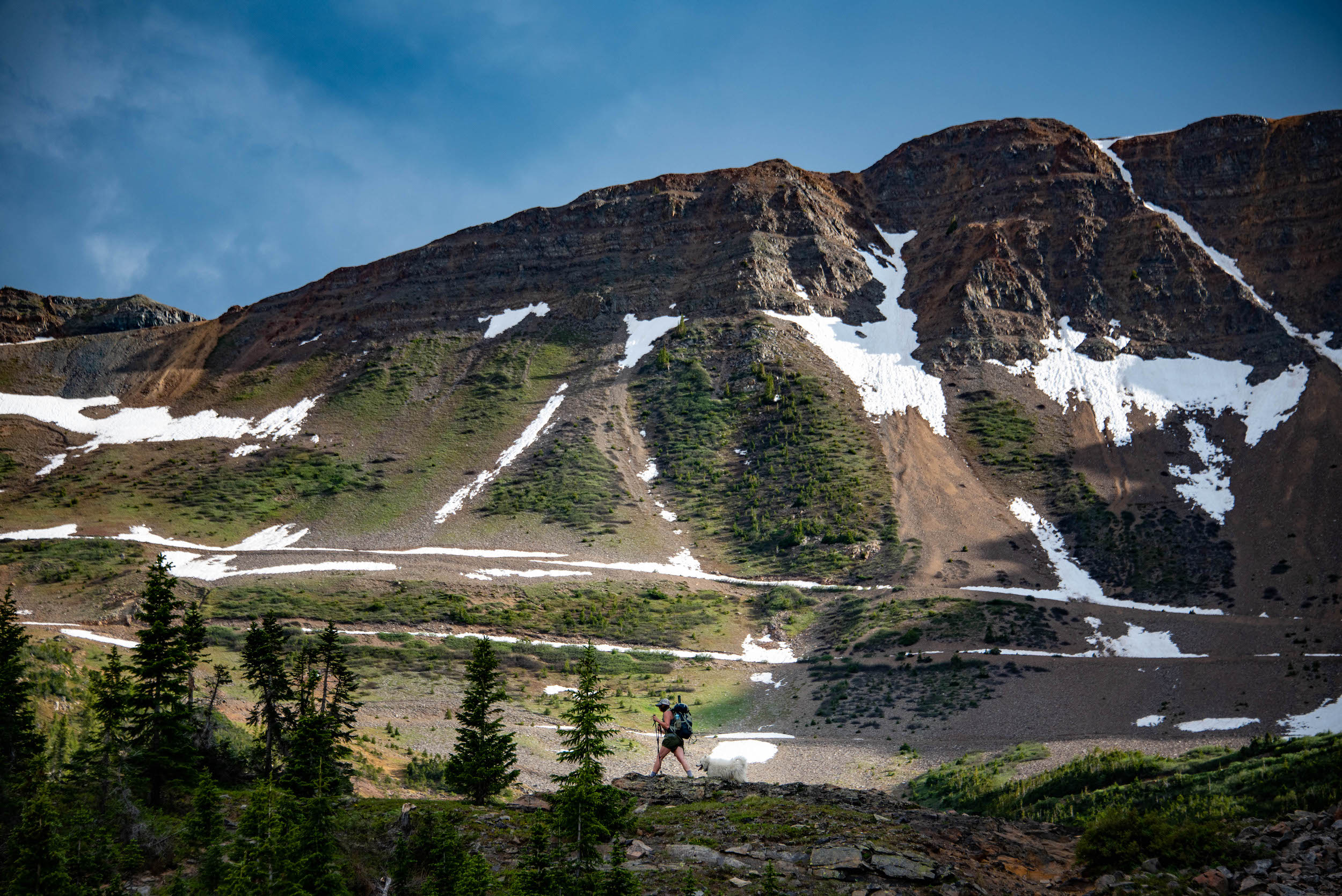
7. Four-season hiking
Get outside on the trails in the Gunnison Valley year-round, whether by hiking or snowshoeing. Summer and fall are the peak hiking seasons in the Gunnison Valley. Summer is warm, wildflowers blanket the landscape and the forests are lush. Fall brings vibrant orange, gold and red hues to the trees of the Gunnison Valley. Hike among the flaming trees on a fall hike.
In spring, Gunnison thaws out before Crested Butte due to warmer temperatures and lower elevation. Hartman Rocks and Signal Peak are two of the best places for spring hikes in Gunnison. Make sure the trail you want to hike is open as spring hiking conditions vary.
Snowshoeing is the winter equivalent of hiking. The Crested Butte Nordic Center grooms about 34 miles of trails that are open to snowshoeing. Other snowshoeing areas include Snodgrass, Cement Creek, Hartman Rocks and Mill Creek. Not all summer trails are open in the winter. Be aware of winter trail use and trail closures.
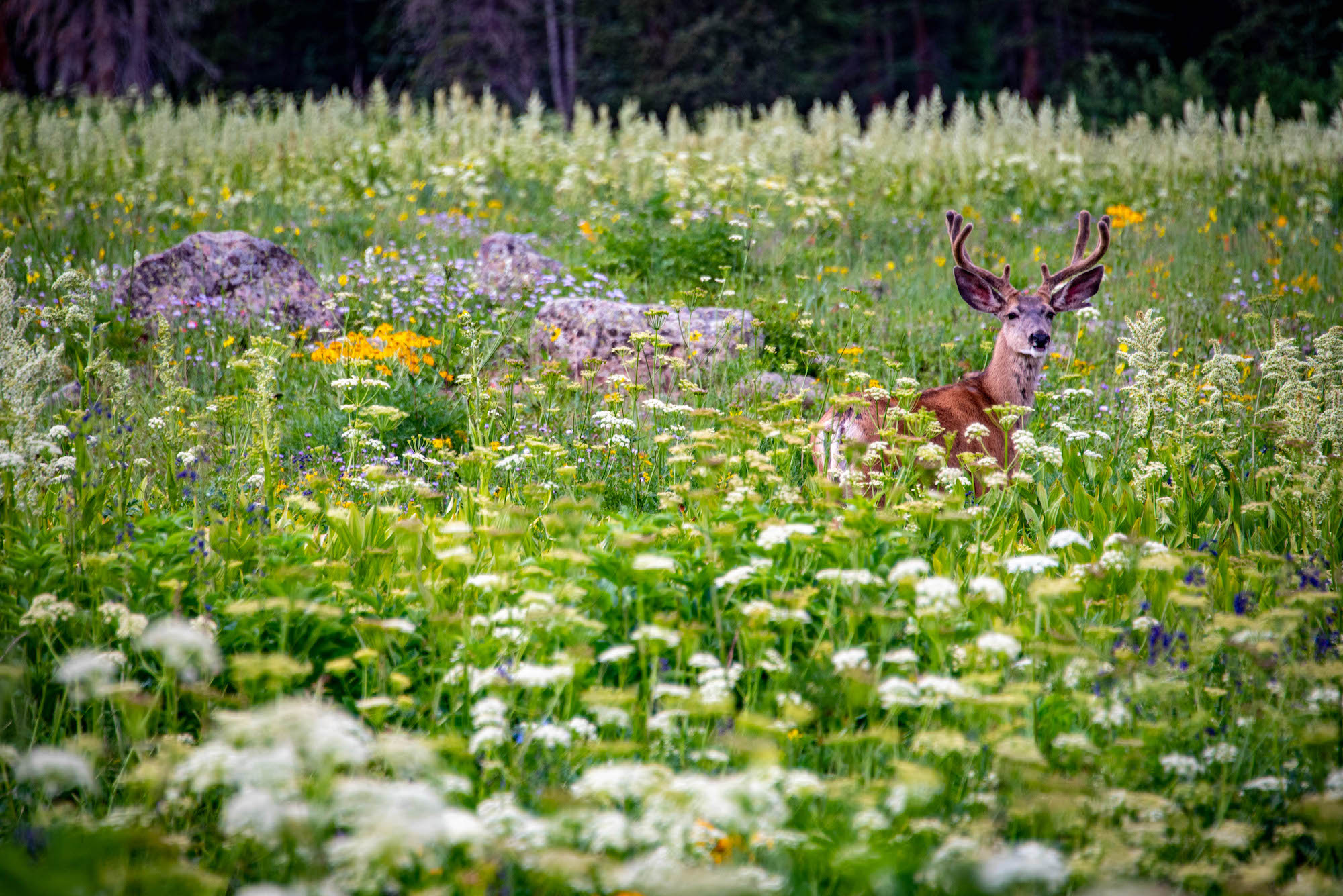
8. Wildlife viewing
Many types of wildlife make their home in the Gunnison Valley. Common wildlife includes mule deer, red foxes, chipmunks and marmots. Elk and moose sightings are rarer. The best way to spot wildlife is by going on quiet hikes at dawn or dusk.
Elk and deer are common in forests and meadows and are most active at dawn and dusk. Marmots live in rocky alpine areas, such as Copper Creek Trail and Snodgrass Mountain Trail. Moose are usually spotted near rivers, lakes and willows. Check out the Quartz Creek drainage near Pitkin and the wetlands around Taylor Park to spot moose.
Birds of prey, such as bald eagles, hunt along the Gunnison River in the fall and winter. They can be spotted on trees along Highway 135 between Almont and the Roaring Judy Fish Hatchery.
9. Wilderness areas to explore
The Gunnison Valley has over two million acres of public lands. There are five different wilderness areas to explore. Wilderness areas in the Gunnison Valley include the West Elk Wilderness, the Raggeds Wilderness, the Maroon Bells-Snowmass Wilderness, the Fossil Ridge Wilderness and the Collegiate Peaks Wilderness.
Wilderness areas are federally protected lands managed to preserve their natural state. Motorized vehicles and equipment are not allowed in wilderness areas. Experience solitude and pristine nature while hiking in wilderness areas. Hikes in wilderness areas include Dark Canyon, Rainbow Lake, East and West Maroon Pass, and Summerville.
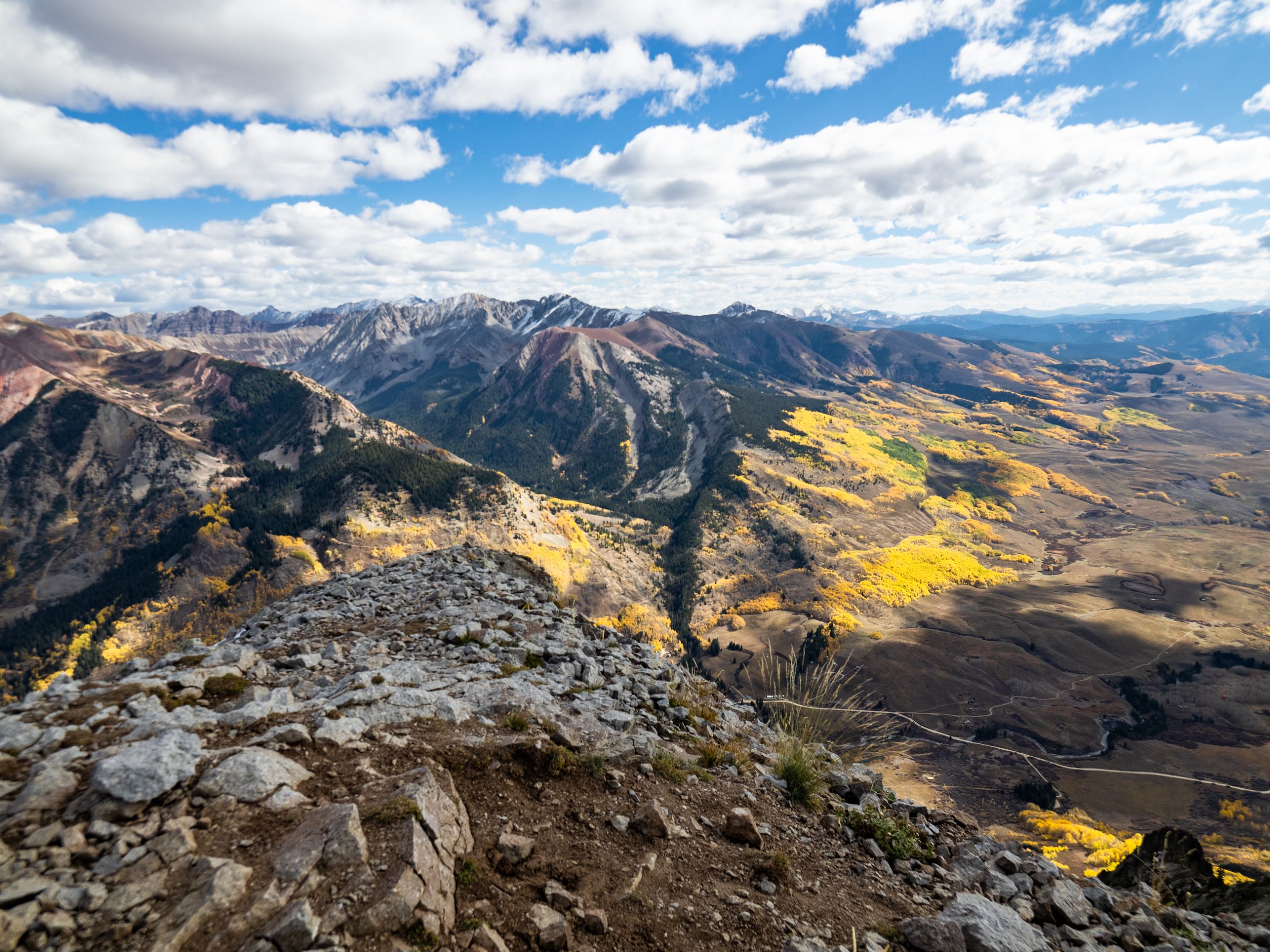
10. Peak bagging
Use the Gunnison Valley as a basecamp for peak bagging. The Gunnison Valley is home to an impressive list of “thirteeners.” A thirteener is a mountain that exceeds 13,000 feet in elevation. Thirteeners in the Gunnison Valley include Gothic Mountain, Teocalli Mountain, Italian Mountain and Cumberland Mountain.
Looking for that extra thousand feet on your trip? Nearby “fourteeners” include Mt. Princeton, Mt. Shavano, Castle Peak, Maroon Peak and North Maroon Peak.
Lodging and meals in the Gunnison Valley
Every hiking trip needs a comfy bed to rest in after a day on the trails. There are lodging options in Gunnison, Crested Butte, Mt. Crested Butte, Almont and Pitkin. Browse options and book a place to stay in our guide to lodging in the Gunnison Valley. End your day hiking with a delicious meal. Learn about dining in Gunnison and Crested Butte and plan out the spots you want to try.
Getting to the Gunnison Valley
Flying into Gunnison-Crested Butte Regional Airport (GUC) is the easiest way to get to the Gunnison Valley. Flights arrive and depart daily from Denver and Texas to GUC. Check out updated flight schedules and book flights here.
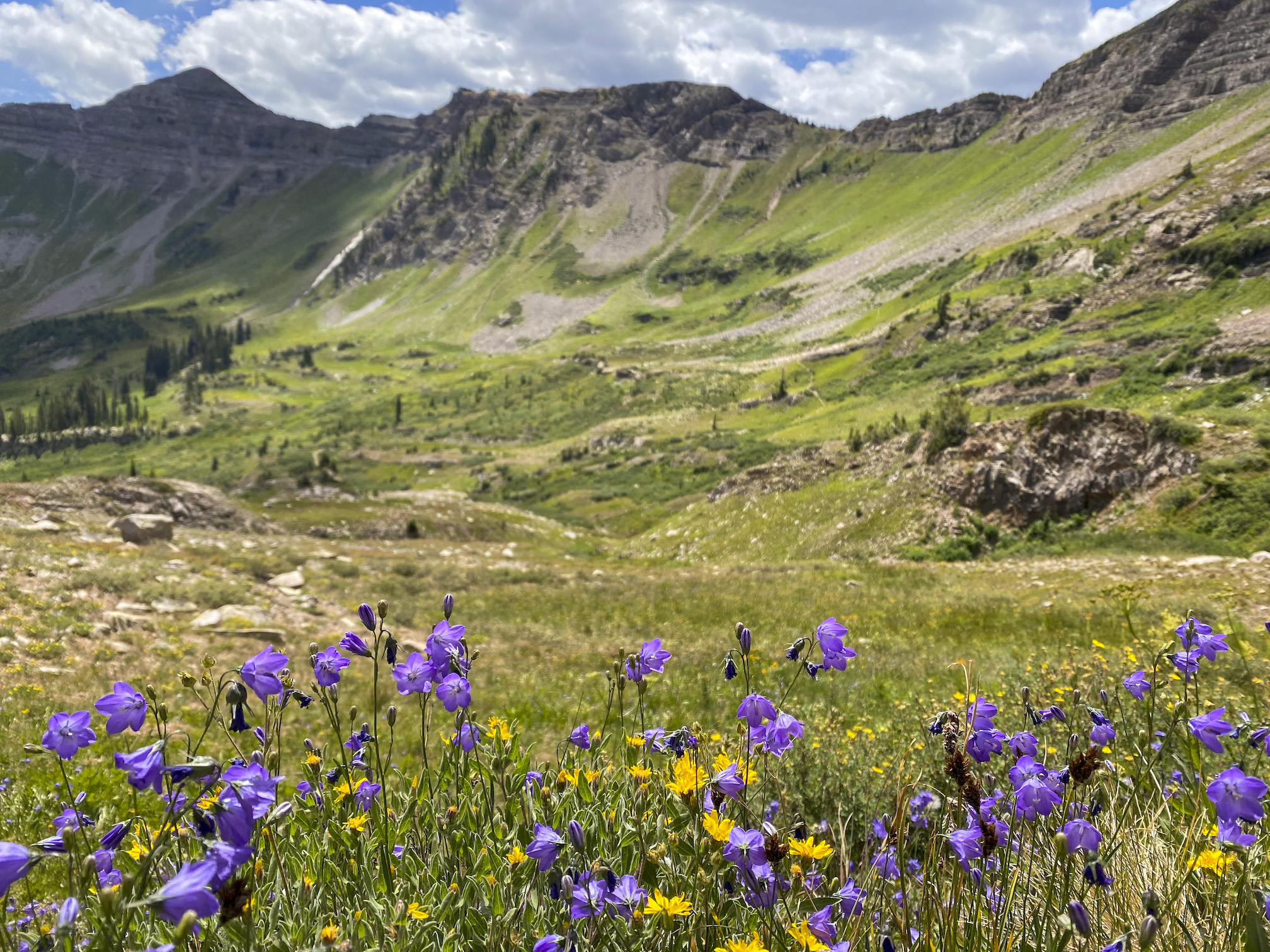
Colorado Hiking Etiquette
Following trail etiquette helps ensure a pleasant hiking experience for you and others. It can also help you avoid tickets and fines that could come from trespassing or littering.
- Respect the right of way: Uphill hikers have the right of way. Bicyclists should yield to hikers. Hikers yield to horse and pack animals.
- Stay on the trail: Straying off the trail can damage the environment.
- Abide by trail closures: Follow all posted trail signs and restrictions. Failure to do so can result in trespassing or damage that could get you in trouble.
- Respect the environment: Do not disturb or feed wildlife. Leave behind flowers, rocks, sticks and feathers. Pack out all trash.
- Be prepared: The weather can change quickly in the mountains. Avoid getting caught unawares. Know your route and bring plenty of water, snacks, sunscreen and layers.
More hikes in the Gunnison Valley
Check out trail guides below for more Gunnison Valley hiking recommendations.


